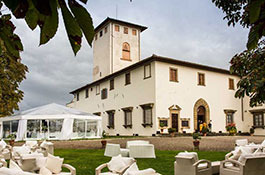In UK and US English, the apostrophe is used:
- To indicate the possessive.
- To indicate missing letters.
- Sometimes to indicate the structure of unusual words.
1. To indicate the possessive.
- This is Peter's book.
- This book is Peter's.
- The dog's dinner looks disgusting.
- Diana was the people's princess.
- I tore up the men's shirts.
- One should choose one's words carefully.
- It is everyone's duty to protest.
- It is no-one's responsibility.
Personal pronouns (words like I, you, he, she, it, we, they) indicate the possessive by becoming a whole new word. These new words are already possessive, so they don't need an apostrophe: my, mine, your, yours, his, her, hers, its, our, ours, their, theirs. Note that none of them has an apostrophe.
- The house is yours.
- The dog broke its leg.
- She said the book was hers.
- They claimed it was theirs.
- But really it was ours.
It's means it is or it has. There's no such word as its'.
2. To indicate missing letters in the middle of words or phrases.
- You can't have it.
- Don't do that!
- I'd like an ice-cream, please.
- We'd better hurry.
But we don't always use apostrophes:
- 15, Elm Rd.
- St Matthew Passion
- Photo is short for photograph.
- It is easier to say CD than Compact Disc.
In the cases where you wouldn't use an apostrophe in the singular, don't use it for the plural:
- I had one photo.
- They had two photos.
- We sell CDs and DVDs.
- I was born in the 1960s.
But we say this CD's broken because it's a short form of this CD is broken.
3. Sometimes to indicate the structure of unusual words.
A few words are sufficiently confusing that we want to indicate to the reader how the word is constructed. The apostrophe can be used for this if it is really necessary, but mostly it isn't.
- He bcc'd a copy to all the managers.
- Mind your p's and q's.
- Dot your i's and cross your t's.
- A list of do's and don'ts.
But you might consider:
- He sent a blind copy to all the managers
- Mind your ps and qs
- Dot your is and cross your ts
- A list of DOs and DON'Ts.
There's no need for it in:
- She got three As in her exams.
- All our CDs are perfect.
- We sell videos.
- I'd like two cappuccinos, please.
Childrens' shoes or children's shoes?
The apostrophe goes directly after the thing doing the possessing:
- The sun's rays = the rays of the sun.
- The table's leg = the leg of the table.
- The archbishop's palace = the palace of the archbishop.
- The archbishops' palace = the palace of the archbishops.
- The men's shirts = the shirts of the men.
- Children's T-shirts = T-shirts of children.
- The people's princess = the princess of the people.
- The American peoples' inheritance = the inheritance of the American peoples.
- My mother's photo = photo of my mother.
- One week's notice = notice of one week.
- Two weeks' notice = notice of two weeks.
- Three years' experience = experience of three years.
- Everyone's help = help of everyone.
Note that we can often use for instead of of – shirts for the men. The possessive is much a looser concept than ownership: the girls may not own the school, but it's still a girls' school.


















No comments:
Post a Comment